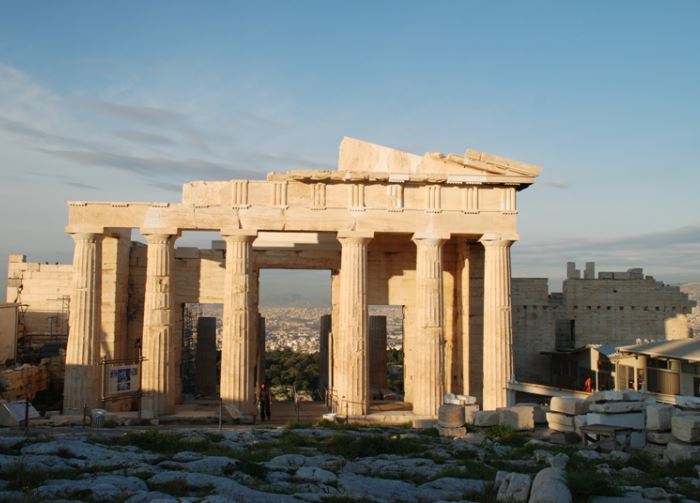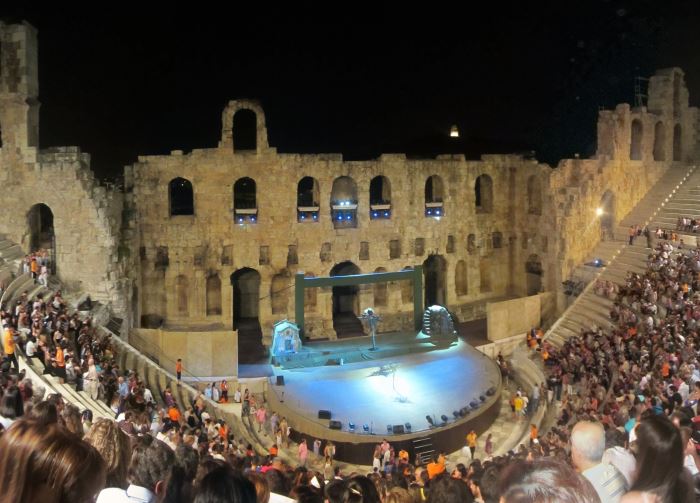June 16 2013, Odeion of Herodes Atticus
The prestigious European Heritage Awards Ceremony 2013 took place in the evening of 16 June at the Odeion of Herodes Atticus, at the foot of the Acropolis. The European Heritage Awards Ceremony was under the auspices and in the presence of Mr Karolos Papoulias, President of the Hellenic Republic, and co-presided by Mrs Androulla Vassiliou, European Commissioner, and Maestro Plácido Domingo, President of Europa Nostra.
The European Union Prize for Cultural Heritage /Europa Nostra Awards celebrate excellence in cultural heritage conservation, ranging from the restoration of buildings and their adaptation to new uses, to urban and rural landscape rehabilitation, archaeological site interpretations, and care for art collections. Moreover, it highlights research, dedicated service to heritage conservation by individuals or organisations and education projects related to cultural heritage.
The awards are supported by the European Commission in the framework of the Culture Programme. Europa Nostra is in charge of organising the selection and the award ceremony. This Awards Scheme aims to promote high standards and high-quality skills in conservation practice, and to stimulate the trans-frontier exchanges in the area of heritage. By spreading the ‘'Power of Example’, the Prize also aims to encourage further efforts and projects related to heritage throughout Europe.
Exemplary heritage achievements in Europe are awarded in the following four categories:
1. Conservation
2. Research
3. Dedicated Service By Individuals Or Organisations
4. Education, Training And Awareness-Raising
 In the Conservation category the 1st prize was awarded to Propylaea Central Building, of the Acropolis of Athens.
In the Conservation category the 1st prize was awarded to Propylaea Central Building, of the Acropolis of Athens.
“This project involved one of the key structures of European culture and the development of western architecture. It began as a purely rescue project, aiming at saving the monument from immediate danger of collapse. But the Jury recognized that in its second stage it succeeded, through the identification and reinstallation on the building of the scattered architectural material and the high quality of the craftsmanship employed, in enhancing the inherent formal and social values of an iconic monument.”
The Propylaea is the monumental gateway to the Acropolis, built 437-432 BC. It consists of a central building with two lateral wings and Doric facades facing east and west. The superstructure of the central building was extensively but inadequately restored in 1909/17, using iron. The aim of this project was to rectify the problems caused by the fragmentation of marble due to the oxidation of this iron.
In a rescue campaign between1990-1993, 64 ceiling blocks of the earlier restoration were disassembled and conserved. Then, under a special programme approved by the Hellenic Ministry of Culture and implemented in the period 2001-2010, a further 192 blocks were disassembled and reassembled using titanium reinforcements. With the addition of the earlier 64 ceiling blocks and 74 further blocks restored for the first time, a total 330 blocks, their weight varying from 0.5 to 11 tons, were re-erected. The ancient material was thus successfully rescued and the architectural values again fully displayed.
